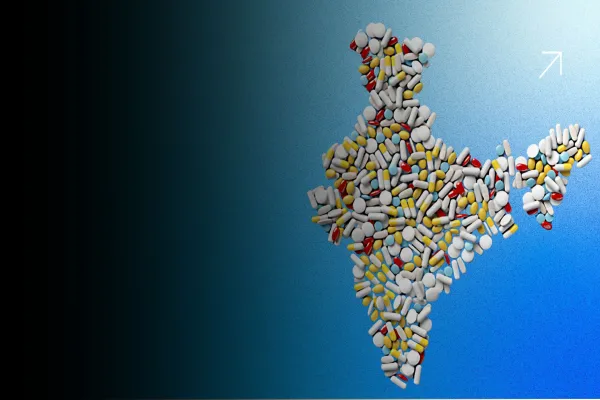If you want to audit your pharma marketing tech stack and get real answers, not a 3-month consulting project that ends in a PowerPoint, you can do it in a week. The key is focus. You’re not rebuilding the stack. You’re assessing whether it’s fit for purpose, compliant, integrated, and delivering ROI.
Here’s how to do it in 7 days without getting lost in endless spreadsheets.
Day 1: Define the Scope and Standards
Start with clarity. An audit without boundaries becomes a data dump. Decide upfront:
- Which brands, therapy areas, or geographies are in scope.
- What “good” looks like, compliance with UCPMP 2024, integration with core CRM, omnichannel readiness, and ability to scale globally.
- Write this down. It’s your benchmark for the week.
Pro tip: In pharma, a marketing tech stack isn’t just tools. It’s workflows, integrations, and the people using them. Audit all three.
Day 2: Map the Stack
List every tool, platform, and service in your marketing ecosystem. CRM, email automation, webinar platforms, WhatsApp integrations, analytics dashboards, content libraries: everything.
For each, capture:
- Purpose
- Owner (department/person)
- Current usage frequency
- Cost
- Contract end dates
You’ll find two common issues: forgotten tools still being paid for, and tools doing the same job as others. Both are red flags.
Day 3: Check Integration Health
Most pharma marketing problems come from disconnected systems. Field reps can’t see what digital sent. Analytics can’t tie campaign clicks to prescriptions. Compliance has no visibility into WhatsApp messages.
To assess integration:
- Check if your CRM is connected to your marketing automation platform.
- See whether engagement data flows both ways between field tools and digital channels.
- Verify if compliance review tools (MLR systems) connect to content libraries.
- Note where manual data transfers or duplicate entries still happen.
- Every broken or manual connection is a point of risk and inefficiency.
Day 4: Test Compliance Workflows
Compliance is non-negotiable in pharma marketing. Audit whether it’s embedded or bolted on:
- Is every asset in your content library approved and tracked for expiry?
- Is digital consent captured and logged for every HCP interaction?
- Do WhatsApp or webinar tools use pre-approved templates?
- Can you pull an audit trail in minutes if the regulator calls?
- If you find gaps, rank them by risk. Missing consent records or unapproved content in circulation are high-priority fixes.
Day 5: Evaluate Channel Performance
Not all channels are equal, and in India, channel performance varies by region:
- Pull engagement data by channel (email, WhatsApp, webinars, rep visits, PWAs).
- Look at doctor engagement in metros vs Tier 2/3 towns.
- Identify underperforming channels, and ask whether it’s a content problem, an audience mismatch, or the wrong tool.
- Don’t just look at clicks and opens. Link engagement data to business metrics: prescriptions, brand recall, patient adherence, wherever possible.
Day 6: Assess Analytics and Attribution
You can’t manage what you can’t measure. A tech stack without actionable analytics is just overhead.
- Are campaign reports tied to outcomes, not just activity?
- Can you segment results by specialty, geography, or brand?
- Do you have a single dashboard that both marketing and leadership trust?
- If analytics is siloed or purely vanity metrics, mark it as a strategic gap.
Day 7: Identify Quick Wins and Critical Gaps
By now, you have a map of:
- What’s being used
- What’s not integrated
- Where compliance is weak
- Which channels are worth the spend
- Where analytics fails
Separate your findings into:
- Quick wins: actions you can take in the next month (turn off unused tools, fix a broken integration, enforce expiry tracking).
- Critical gaps: issues that need budget or strategic change (unified CRM, regional content delivery, advanced analytics).
This prioritisation makes the audit actionable, not just informational.
What Happens After the 7 Days
A one-week audit is only valuable if you follow through. Use your findings to:
- Build a roadmap for consolidating tools.
- Strengthen compliance workflows before a regulator forces you to.
- Reallocate budget from underperforming channels to high-ROI ones.
- Plan integrations that eliminate silos and give you a single view of the doctor.
Done right, this audit becomes the foundation for a marketing tech stack that works: for your teams, for your compliance officers, and for the doctors you need to engage.
The Bottom Line
If you can audit your pharma marketing tech stack in a week and get an honest picture of what’s working, you’re already ahead of most of your competitors. The stack you have today is either helping you win market share or quietly eroding it. The difference is whether you know where it’s leaking value.
If your audit shows too many gaps to fix alone, don’t let the momentum die. We work with India’s top pharma brands to turn messy, fragmented stacks into compliant, integrated growth engines. You’ve already taken the first step by auditing. Now make sure the fixes actually happen.





